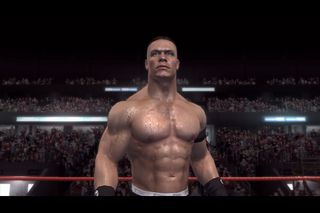Have you felt in any way sort of limited by what you can do on next-gen consoles, because in the back of your mind you're thinking, "I've got to do this on PSP and PS2 as well?"
HF: We can't really say that it has no limits on what we do for next-gen, but we work to... try not to be too limited in what we do on next-gen. I don't know if you all have seen the build, but we have some big new features this year that are the main features. So basically what we do is we think of next-gen first, and like, OK, what's the closest we can come to that on each platform going back?

Were there any of the new features that you weren't able to include in current-generation consoles?
Taku Chihaya: Overall, in terms of a whole feature that we couldn't do on current-gen, there aren't really any. Even if we continued working on the PS2 forever, we'd always be changing gameplay, and coming up with new ideas for gameplay, and so on. What we can do on next-gen is, we have this gameplay idea, and we can make it look a lot cooler and a lot more real, and get a lot more fancy stuff along with it.
So, one of the things you'll see in the demo this year is the fighting in the crowd area, so if you look at it on next-gen, there are a lot of animated people around the area, that when you get thrown over the rail, they pat you on the back, and you get these nice particle effects when you smash stuff. We have the same feature on the PS2 and the PSP, but we have fewer people who we call the "smart" crowd members. There are fewer of them because we can't have as many, [and] the graphics don't look as nice for those people because they're lower-polygon models. So we do the same features, but the presentation can't be as nice on the lower-end machines.

